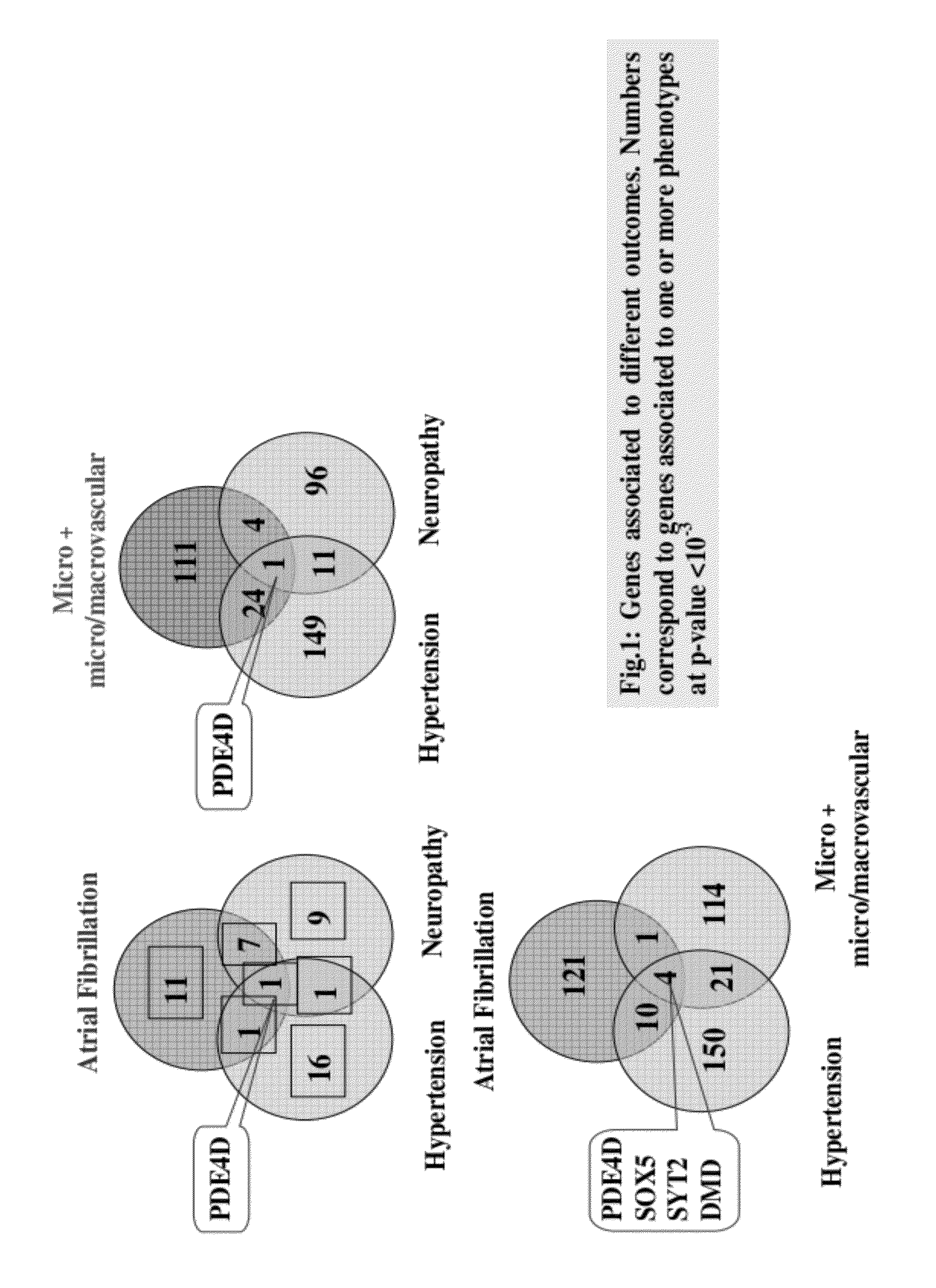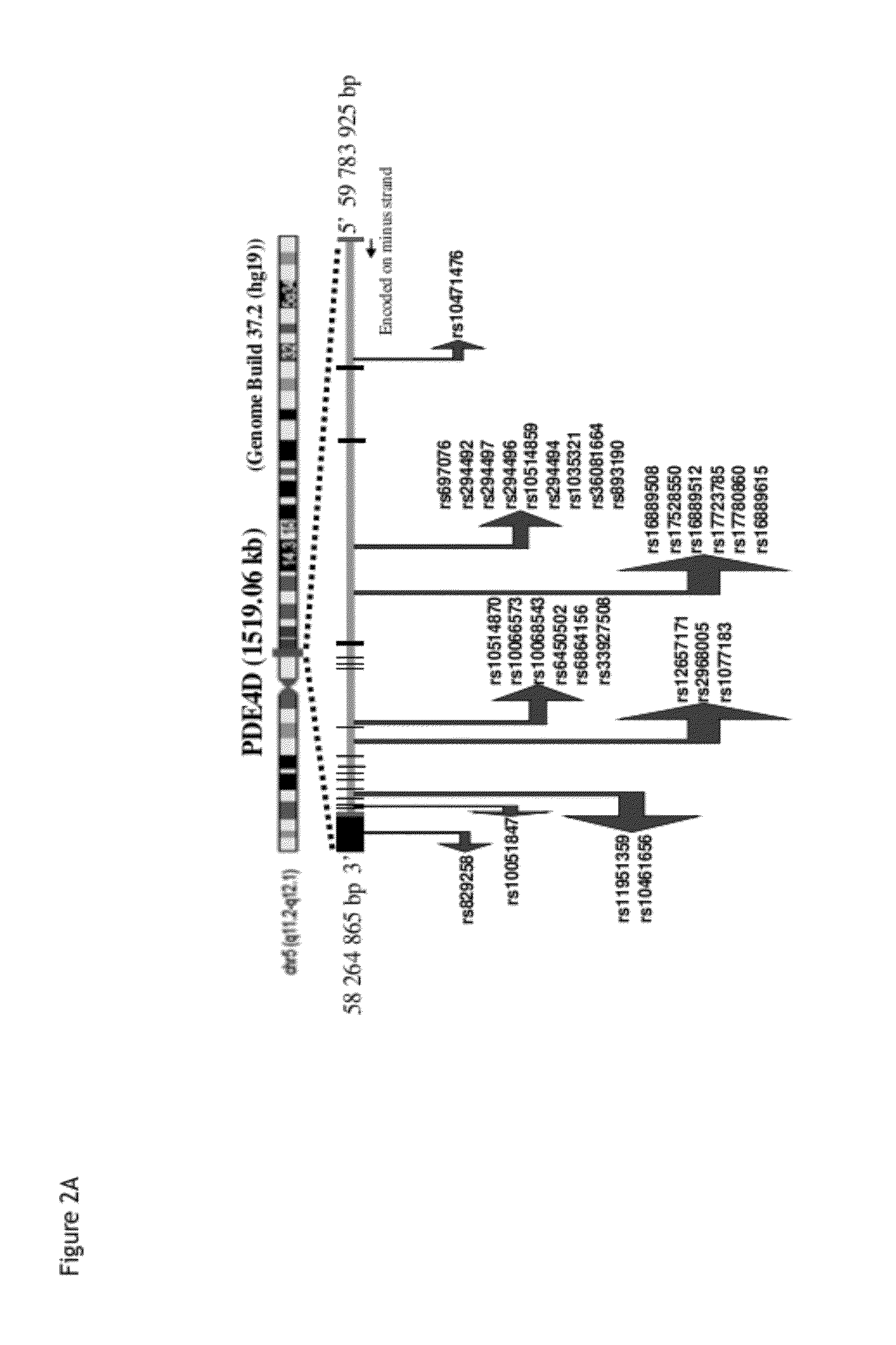Genes linking several complications of type-2 diabetes (T2D)
a type-2 diabetes and several complications technology, applied in the field of genes linking several complications of type-2 diabetes, can solve the problems of general limited predictive power, hyperglycemia tends to progress to impaired glucose tolerance, and beta-cells can lose their insulin secretion capacity, so as to prevent, treat and/or reduce the risk of developing these complications.
- Summary
- Abstract
- Description
- Claims
- Application Information
AI Technical Summary
Benefits of technology
Problems solved by technology
Method used
Image
Examples
example 1
Methods
[0251]Total genomic DNA was extracted from human blood with FlexiGene DNA kit from Qiagen and dissolved in sterile TE buffer. DNA collection was preserved at a standard concentration of 1 μg / μl in a cold room. ADVANCE patients (n=2313) of Caucasian origin (Pritchard et al. Inference of population structure using multilocus genotype data. Genetics, 55:945-59, 2000) having several complications of T2D were compared to controls T2D patients without such complications, recruited for older age or long T2D duration. All patients' DNA was genotyped by Affymetrix GeneChip® SNP arrays 5.0 and 6.0. This assay is comprised of 1 array and two assay kits. The array is designed to detect over 906 000 single nucleotide polymorphism (SNPs) on the human genome plus 946 000 copy number variants. Genome-wide human SNP Nsp / Sty assay kit was used (Purcell et al. A toolset for whole-genome association and population-based linkage analysis. American Journal of Human Genetics, 81, 2007). For SNP map...
PUM
| Property | Measurement | Unit |
|---|---|---|
| concentration | aaaaa | aaaaa |
| concentration | aaaaa | aaaaa |
| insulin resistance | aaaaa | aaaaa |
Abstract
Description
Claims
Application Information
 Login to View More
Login to View More - R&D
- Intellectual Property
- Life Sciences
- Materials
- Tech Scout
- Unparalleled Data Quality
- Higher Quality Content
- 60% Fewer Hallucinations
Browse by: Latest US Patents, China's latest patents, Technical Efficacy Thesaurus, Application Domain, Technology Topic, Popular Technical Reports.
© 2025 PatSnap. All rights reserved.Legal|Privacy policy|Modern Slavery Act Transparency Statement|Sitemap|About US| Contact US: help@patsnap.com



